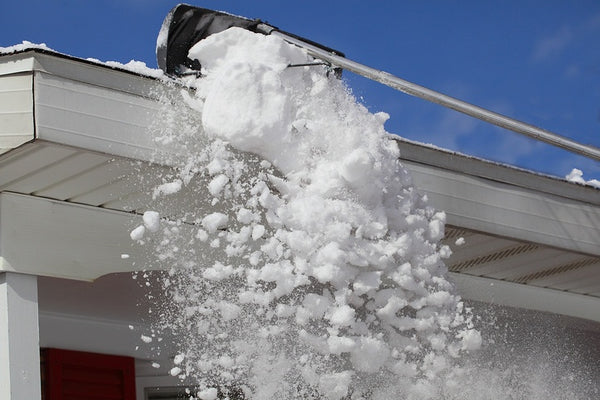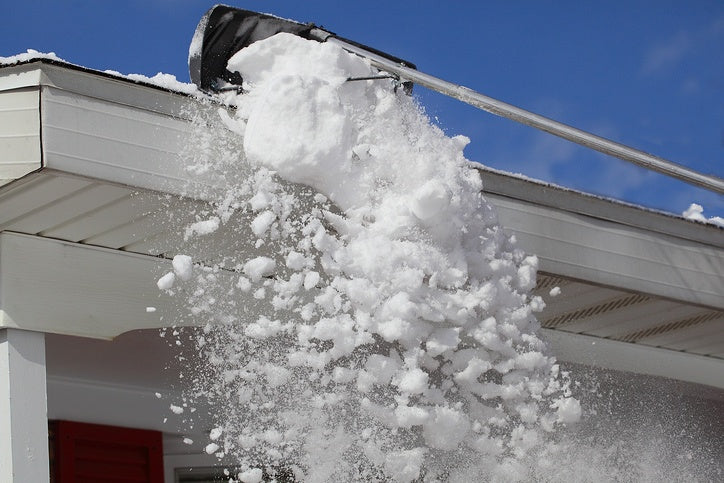
In February 2015, record snowfalls in Boston caused 44 roofs to collapse across a two-day period. Throughout New England, in fact, ice dams, snow drifts, and snow weight threatened roofs as more than seven feet (2.13 m) of snow arrived in one month’s time.
While the winter of 2014-2015 was unusually severe, the dangers to the roofs of industrial and commercial facilities are very real every winter season. Facility managers must be aware of the problems that snow and ice can pose to their facility's roofs and to the safety of those in and near the building, and prepare a roof snow removal plan accordingly.
Preventing Structural Damage and Collapse
The first step in preventing major roof damage during the winter is to be aware of the load-bearing capacity of your roof and of the approximate snow-weight currently on it. Flat and low-pitch roofs, so often used at managed facilities, are particularly prone to snow accumulation. These roofs usually have strong support systems, but the snow level must still be monitored to keep things safe.
One cubic foot (0.02 cubic meter) of powdery snow weighs about six to eight pounds (approximately 3 - 4 kg). The same quantity of packed or wet snow may weigh 20 pounds (9 kg), and ice in that amount can weigh up to 60 pounds (27.2 kg). Multiply any of these figures by the square footage of your roof surface and by the depth of the snow on top, and you will get an idea of the great strain your roof is subjected to each winter--and the subsequent importance of roof snow removal.
In general, you should not allow more than 18 inches (45.72 cm) of snow on a low-pitch roof nor more than 20 pounds of pressure per square foot (97.64 kg per square meter). FEMA, however, also warns that the attempt to remove excess snow is itself dangerous to a roof and to the people clearing it. Walking on the roof and shifting snow can create load-imbalances, and it is even important in what order different parts of the roof are cleaned off.
Some signs that your roof is under too much pressure include:- Visible sagging
- Cracks developing in the walls
- Major roof leaks
- Creaking or popping sounds
- Doors that pop open
- Doors that are hard to open
- Windows that are hard to open
- Sprinkler heads dropping below ceiling tiles
- Use a plastic shovel since metal can damage the roof and conduct electricity if it touches a wire
- With pitched roofs, use a snow rake with a long extension-arm.
- Begin at the edges and work to the peak.
- Leave 2 or 3 inches (5 - 8 cm) of snow on top to ensure you don't damage the roof.
Other Dangers to Watch Out For
Besides outright collapse, there are other roof-related dangers that will need some attention:
- Ice dams can form when snow melt-off from the warmer central roof area refreezes at the colder eaves and backs up water. Better below-roof insulation and ventilation are the main answers.
- Large icicles can dangle from the eaves, threatening to break off and fall on anyone walking or standing below.
- Roof vents can get bent by sliding snow or clogged up with ice or snow. The latter could lead to dangerous gases being trapped in the building.
- Ice on the roof may damage wiring and cause a fire hazard. Protecting pipes and vents with plywood is sometimes effective.
- Roof-based snow drifts might dust entryways, and melt-off might drip there and refreeze. An industrial-strength heated floor mat can keep all entrances clear and dry.
Winter brings many dangers to a facility's roofs and to those who walk or stand near them. Being aware of these potential problems and knowing viable solutions enables for safer rooftop snow removal, and for other dangers to be prevented or quickly eliminated.


